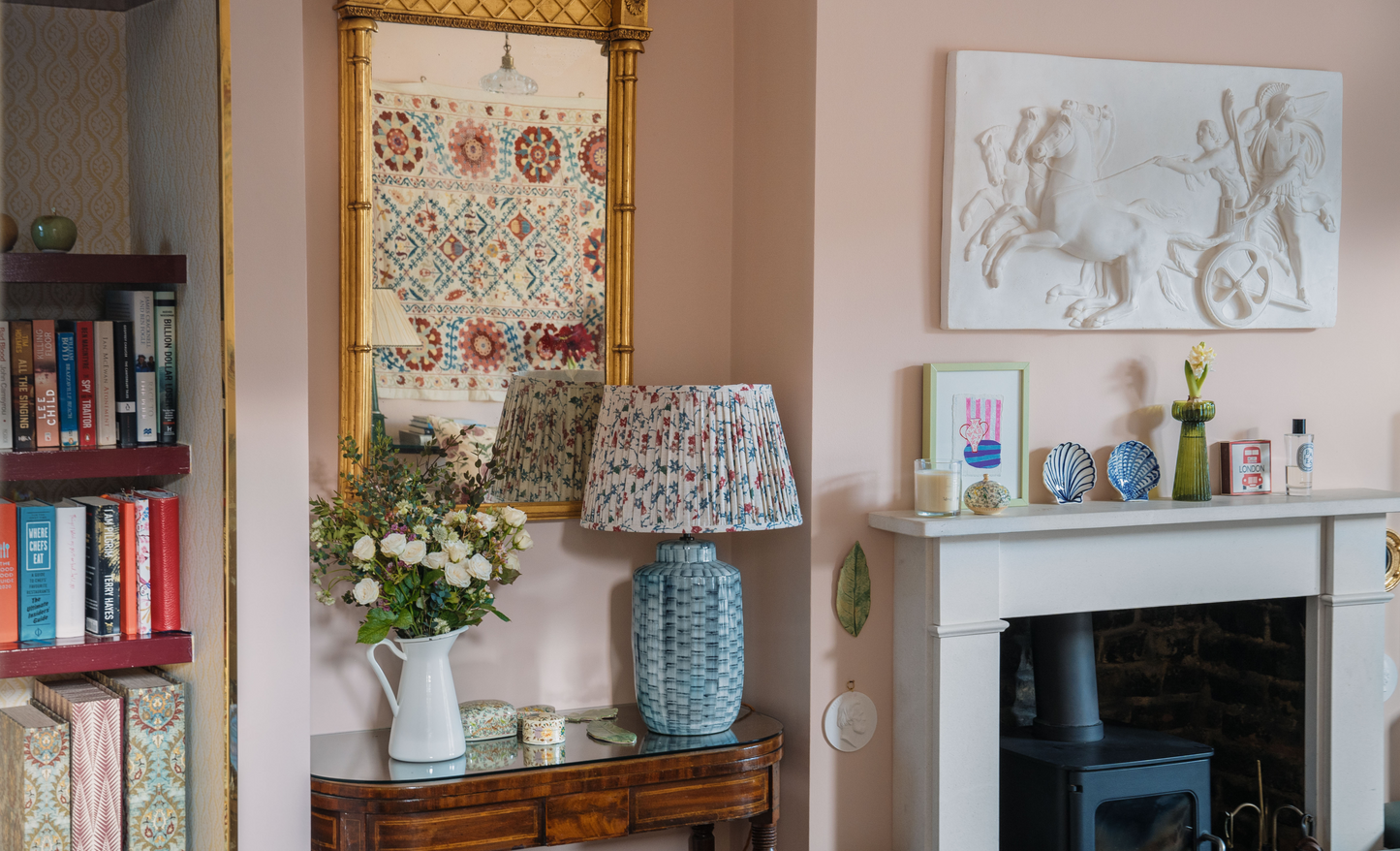
Our latest spotlight is with the wonderful and inspiring Olivia White-Hamilton aka @olpol_and_co, who is based in Dorset and mainly works on residential projects throughout the UK. Having spent childhood holidays on the West of Scotland, she incorporates her love of landscapes/seascapes into her work. As we know, sustainability in this industry is a key factor for me and Olivia also supports British craftsmen and sources materials etc from responsible suppliers - hurrah!
How do you go about incorporating vintage textiles into your work?
Oh sooo many ways! The tougher vintage textiles make lovely upholstery fabrics and rugs. The more delicate ones work so well as cushions, wall hangings and lampshades. I love using vintage trims too on lampshades and cushions.
How best to display vintage textiles ?
If you really want to appreciate a vintage textile in all it’s glory; the best way to display them is to hang them on the wall. This can be done with a brass pole, or for a more cost effective solution on a bamboo pole or just on simple hooks. We hung a lovely suzani in a sitting room of a London townhouse project, just using hooks and it created such a warm and fun impact on the room. We placed a mirror on the opposite wall so that when you walk into the room your eye catches a reflection of the suzani.
Where to start when using vintage textiles? Can they inspire a whole scheme?
Using a vintage textile as a starting point for a room scheme is a great way to begin the design, it gives you an anchor to always go back to (we all know how easy it is to get distracted by a beautiful fabric we love that doesn’t fit into the look we want to achieve!). When you’re looking for the perfect vintage fabric, just find something that you really love. You can then think of creative ways to use it and you can pick out the colours from the vintage fabric to source other fabrics to build your scheme.
Unique creative ways of working with vintage textiles?
Thin vintage textiles and decorative trims make the best lampshades! They often let light through in a lovely uneven way which you can’t achieve with a new fabric.
Why do you love working with vintage textiles?
In the words of Patsy Stone “One should never be the oldest thing in one’s house” and we couldn’t agree with her more! Vintage pieces add depth, originality and interest to a room. We always aim to create rooms which feel like they’ve always been there and will still look brilliant in decades to come. Using vintage textiles creates a timeless vibe.
Why would you recommend for others to work with vintage textiles?
In a world where social media means that anyone with an interior design interest can access millions of interior photographs, we all get a bit bored of seeing the same fabrics used over again and again. Using a vintage textile creates a unique look which nobody can replicate exactly.
What would your top 3 tips be for anyone looking to start using vintage textiles?
- Buy vintage textiles you love – I have already said this but I really can’t stress it enough, if you buy things you really love you’ll never regret buying them and you’ll always find a place for them in your home.
- Scale, thickness and size – If you’re planning to use vintage textiles on furniture make sure it is the right material for the job! Speak to your upholsterer before making the purchase, especially if you’re buying the textile with only one use in mind.
- Keep your eyes peeled - There are so many wonderful people like Chloe who are out there sourcing beautiful vintage textiles, so follow them on Instagram and keep an eye on their websites for new stock. Sometimes you need to be quick off the mark - as the beauty but also the frustration of vintage pieces - is that once they’re gone, they’re gone!
There seems to be such an abundance of fabric choices these days but we can’t help but feel that with this comes an abundance of waste. It is often hard to find out how a fabric is made, how far it’s been shipped and how damaging the process is for the environment. There has been progress in the last few years, however, the interior design industry has a long way to go to improve sustainability - we should all try not to be swayed by trends that mean we redecorate too often.
There are lovely sustainable products out there and it is great to see some smaller more affordable companies popping up who are creating more sustainable British made products. Often more sustainable fabrics come with a big price tag though.
I hope we all use more vintage textiles going forward because they are often good value and are the most sustainable way to furnish.



